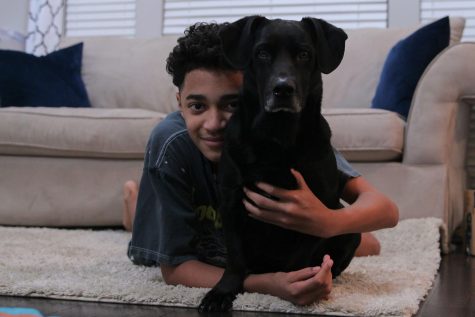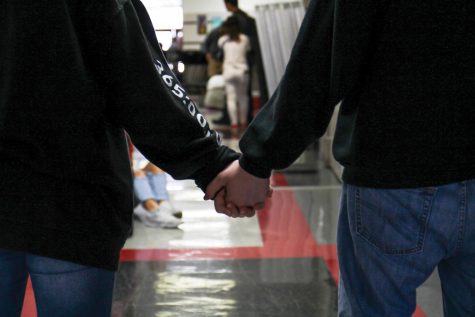A Day in the Life of a Celiac
February 5, 2022
What is Celiac disease?
Celiac disease, also called Celiac, is an autoimmune disease that causes those with it to be unable to digest gluten.
But what exactly is gluten? Gluten is a protein specifically found in wheat, barley, and rye, most typically known in foods with wheat flour, like bread, cookies, cakes, and more. The disease is hereditary, so those with it have the gene passed on from one of their parents, but this doesn’t necessarily mean that their parents have Celiac. Many people can have the gene for Celiac disease, but it is typically triggered by an event or anomaly in the body, often in the form of a severe illness.
Celiac affects each person differently, but the most common symptoms are stomach pain, bloating, diarrhea, and fatigue – all from eating gluten. The logistics of a Celiac reaction to gluten involve the immune system attacking gluten proteins that enter the small intestine, but also damaging itself along with it.
Some patients who are diagnosed find extensive damage to their small intestine, which can take months to fully heal. Furthermore, this kind of autoimmune disease puts Celiac patients at extreme risk for other autoimmune diseases and disorders, such as rheumatoid arthritis, diabetes, and more.
The only solution for those with Celiac is a complete gluten-free diet for the rest of their lives. Some diets need to be stricter than others due to varying degrees of sensitivity. Because of eating with extreme restrictions on gluten cross-contamination, sometimes people think that Celiac is an allergy to gluten. This is false. Although there are such things as wheat allergies, Celiac is an autoimmune disease that simply has similar restrictions to an allergy.
My diagnosis:
I was diagnosed with Celiac disease in August 2015, after having both bloodwork and a small intestinal biopsy. I had been sick for the majority of the few years prior to that time – being constantly nauseated, having a bloated stomach, and barely eating.
The blood test and extreme damage to my small intestine indicated that I have a very serious case of the disease and would have to go on a full gluten-free diet, taking into consideration cross-contamination as well. I have been living on that diet ever since.
A day-to-day basis:
Here’s the rundown of some things I have to do on a typical day to maintain my Celiac-friendly gluten-free diet.
Morning:
If I want to grab breakfast before school, it can be rather hard to find a quick grab-and-go. My go-to is an “Oven Baked Bar” by Glutino, which is about as close to Pop-Tarts as it gets. But if I want to make a larger breakfast, like on a weekend, changes such as substituting gluten-free pancake batter are necessary.
If I make toast, not only must I use gluten-free bread, I have to use my own toaster separate from my family’s. This toaster has only ever had gluten-free bread in it, and it is necessary so that I don’t get sick from cross-contamination of gluten. Furthermore, if I want butter on that toast, I need to use a separate butter tub and knife from my family because it’s common for people to put their knife back in the butter after spreading it on bread, leaving crumbs of gluten in the butter that would get me sick. The same goes for jams, jellies, and Nutella.
To be honest with you, I’m not much of a breakfast person, but these precautions help me to be safe any morning when I’m in the mood for some food.
Lunchtime/afternoon:
Being strictly gluten-free, I can’t eat the typical school lunches. So I bring my lunch every day (or go off-campus because I’m a senior).
Packing a typical sack lunch looks a bit different when it comes to being gluten-free. Your basic sandwich, cheese and crackers, and more must be substituted for their gluten-free counterparts which sometimes don’t hold up being carried around in a lunchbox all day. My go-to, (don’t laugh), is gluten-free dinosaur chicken nuggets. They are microwavable or oven-cooked and I pack them in my lunch along with some ranch dressing to dip them in.
Along with that, I usually pack some fruit and chips aside, as many potato chips are gluten-free naturally (that doesn’t mean all though).
Evening:
Though my mom has perfected the art of cooking with gluten-free flours (like almond, potato, or rice flour), my family is still able to eat out with my gluten-free diet – we just have to be very careful about where that is.
Chick-fil-A for example has gluten-free grilled chicken nuggets, and they also have a gluten-free bun for a grilled chicken sandwich. But the real stickler when it comes to these restaurants is my favorite food: french fries. Though most fries are simply cut-up potatoes stuck in a fryer, if the fryer oil is shared with that of gluten-containing foods like chicken tenders, I cannot eat them due to cross-contamination. Luckily, the french fries at the Arlington Chick-fil-As are separated from the chicken nuggets, but any time I venture to a new restaurant with fries, I have to ask them whether they use separate fryers, which will often land me speaking with the manager.
When it comes to sit-down restaurants, I usually have to ask for a gluten-free menu or one with the main allergens listed to find something to eat. If all goes according to plan and I end up with french fries, I’m happy.
Events:
Finding and eating full gluten-free meals has become a lot easier for me as time has gone on, but provided snacks, specifically those at school, are a different story. A typical way to gain the interest of high school students for club meetings, parties, or after-school activities is to provide food. The first examples that come to mind are pizzas, cupcakes, and cookies: all gluten-containing items.
By now, I’m used to not eating food at these events, which is probably better for my health in the long run anyway, but if I know about the provided food beforehand, I may bring my own snacks to tide me over.
There are some instances where, if the club directors or leaders know me well, we will talk beforehand and something separate will be provided for me. The same goes for many friends of mine with allergies or intolerances, so luckily I’m not always alone in skipping out on party food.
Moving forward:
So far, it seems I will be on a gluten-free diet for the rest of my life, having a checkup and blood work with my Gastrointestinal doctor every year and enjoying the best gluten-free foods I can find. Although, there is ongoing research for supplements that will allow those with Celiac to eat a small portion of gluten along with it, and maybe one day they will have a breakthrough that will change the game.
But for now, as more and more people in the U.S. are diagnosed with Celiac disease every day, I hope to spread awareness about the disease and those it affects so that more restaurants and food services will begin to provide gluten-free options.
For more information on Celiac disease and research for a cure, feel free to visit beyondceliac.org.

